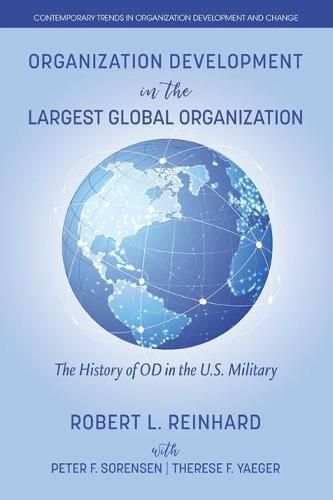Readings Newsletter
Become a Readings Member to make your shopping experience even easier.
Sign in or sign up for free!
You’re not far away from qualifying for FREE standard shipping within Australia
You’ve qualified for FREE standard shipping within Australia
The cart is loading…






This title is printed to order. This book may have been self-published. If so, we cannot guarantee the quality of the content. In the main most books will have gone through the editing process however some may not. We therefore suggest that you be aware of this before ordering this book. If in doubt check either the author or publisher’s details as we are unable to accept any returns unless they are faulty. Please contact us if you have any questions.
The U.S. military, as the core constituent of the Department of Defense, collectively represents the largest and most complex organization on earth. As such, the U.S. military implemented the largest formal OD programs in the world. These programs, from inception to present day, utilized diverse and evolving OD intervention typologies to garner congruence with the environment. The research for this book, accomplished using an inductive, grounded theory approach, examined the initiatives that fostered the use of OD intervention typologies. The findings revealed three major epochs of OD interventions that span a 50-year timeline. The epochs include: (1) Traditional OD; (2) Total Quality Management (TQM); and (3) Continuous Process Improvement (CPI). The epoch of Traditional OD represents the use of human process interventions while TQM and CPI represent the use of technostructural interventions. In the end, the relationship between organization design and culture, and the selection of OD intervention typologies, were best explained using variables that explicate diverse environmental occurrences that influenced senior military leaders’ perceived need for specific OD interventions. These perceived needs were predicated on the requirement to exploit vital resources in an effort to bolster warfighting operational readiness in support of the American citizenry.
$9.00 standard shipping within Australia
FREE standard shipping within Australia for orders over $100.00
Express & International shipping calculated at checkout
This title is printed to order. This book may have been self-published. If so, we cannot guarantee the quality of the content. In the main most books will have gone through the editing process however some may not. We therefore suggest that you be aware of this before ordering this book. If in doubt check either the author or publisher’s details as we are unable to accept any returns unless they are faulty. Please contact us if you have any questions.
The U.S. military, as the core constituent of the Department of Defense, collectively represents the largest and most complex organization on earth. As such, the U.S. military implemented the largest formal OD programs in the world. These programs, from inception to present day, utilized diverse and evolving OD intervention typologies to garner congruence with the environment. The research for this book, accomplished using an inductive, grounded theory approach, examined the initiatives that fostered the use of OD intervention typologies. The findings revealed three major epochs of OD interventions that span a 50-year timeline. The epochs include: (1) Traditional OD; (2) Total Quality Management (TQM); and (3) Continuous Process Improvement (CPI). The epoch of Traditional OD represents the use of human process interventions while TQM and CPI represent the use of technostructural interventions. In the end, the relationship between organization design and culture, and the selection of OD intervention typologies, were best explained using variables that explicate diverse environmental occurrences that influenced senior military leaders’ perceived need for specific OD interventions. These perceived needs were predicated on the requirement to exploit vital resources in an effort to bolster warfighting operational readiness in support of the American citizenry.